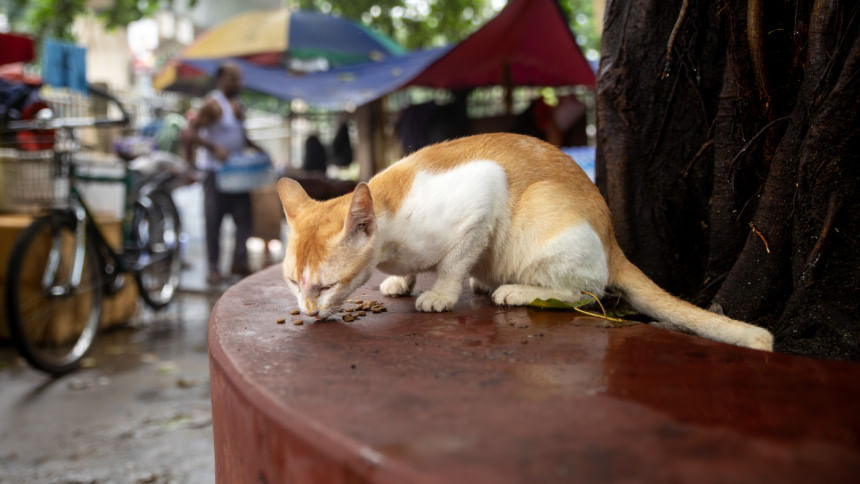Are we treating the strays right?

There was a time, not too long ago, when stray animals weren't seen as a nuisance. They were silent companions who were considered a part of the community. They may not have worn collars or eaten from food dispensers, but they belonged everywhere and with everyone.
Strays used to be able to roam around freely, without having to think about food or a place to sleep, because residents left their windows ajar, kept leftover food aside, and made space in the corner of their verandas. Whenever it was time for a meal, cats and dogs would show up at these homes. These animals weren't "owned," but they were cherished. Every neighbourhood had a familiar face. The community members would collectively care for them, like a neighborhood ritual. However, times have changed. Communities no longer welcome strays. Rather, they take stringent measures to keep them away.
What, then, should we make of the stories about how neighbours used to safeguard and care for the animals?
I heard from my mother that, on a stormy night, my grandfather rescued a family of cats. After a lot of searching, amid the storm, he managed to find the mother and her litter of kittens. He brought all of them back home. In many ways, it feels as though the sentiments that my grandfather fostered were passed down to him through the spirit of community. But why exactly has this sense of responsibility withered away?
Perhaps, architecture played a role. Before, homes were built close to the ground. Almost every house had open courtyards and shaded spaces that naturally offered shelter, allowing easy access for cats and dogs.
However, as cities grew vertically, high rises replaced smaller buildings. With people retreating into their own individual spaces, the emotional distance within the community widened as well. Tall buildings and gated communities left no room for strays to wander around or rest for a while. By placing individuality at the heart of our urban life, we have paid the price of a weakening community, one that drastically changed people's mindset towards stray animals. Not only do they think of these animals as pests, but they are also ready to go to any extent to get rid of them.
Earlier this year, reports of brutal violence being inflicted on strays surfaced. Take, for instance, the brutal killing of a dog named Keeper, a known and loved stray in Dhaka's Elephant Road area. Another shocking incident unfolded last year in Japan Garden City in Mohammadpur, with multiple dogs and cats dying after consuming poisoned food that was left out in the open.
Amidst the grief and anger that these incidents fuel, there are glimpses of hope. Small activist groups are stepping up – rescuing injured animals, organising adoption drives, and educating the public about neutering and co-existence. More people are also speaking up, demanding laws that protect street animals and punish cruelty.
What we must reckon with, though, is that we have regressed from where we once were. We should not be depending only on a small group of people to take care of all strays. It should be a community effort. We must acknowledge that strays were and remain a part of the neighbourhood.
As the short story "Biral" by Bankim Chandra Chattopadhyay notes, when both humans and animals feel hunger and thirst, only humans are allowed to eat freely, while animals are beaten for doing the same.
"Whatever you eat, we have a share in that too, simply because we are a part of this society too."
Reviving empathy isn't just about changing minds; it's about rebuilding spaces, values, and rhythms that allow us to live with animals, not just around them.
References:
1. The Daily Star (March 9, 2025) Community shocked after beloved dog Keeper killed.
2. The Daily Star (November 23, 2024) The tragic fate of stray animals in Japan Garden City.
Adrin Sarwar is a final-year student studying Printing and Publications Studies. Reach her at [email protected]

 For all latest news, follow The Daily Star's Google News channel.
For all latest news, follow The Daily Star's Google News channel. 









Comments